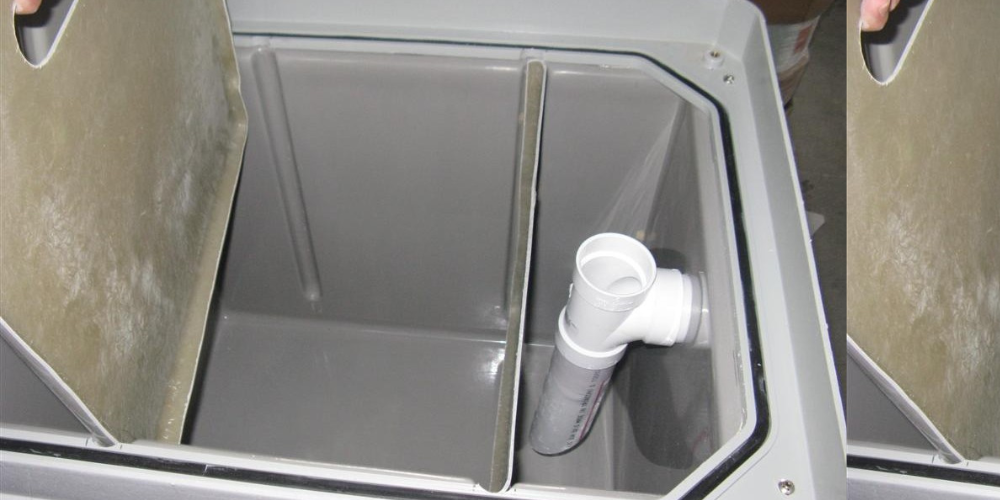A plastic grease interceptor kit is a plumbing component used to separate grease and oil from wastewater before it enters the sewer system. The kit typically includes a plastic grease interceptor tank, inlet and outlet pipes, and a cover.
Here are some key features and detail of plastic grease interceptor kits:
- Durable and lightweight: Plastic grease interceptors are made of high-density polyethene (HDPE) and are resistant to corrosion, rust, and chemical damage. They are also lightweight and easy to handle, making them ideal for a wide range of commercial and industrial applications.
- Easy to install: Plastic grease interceptors are easy to install and can be customized to fit the specific needs of the installation. The kit includes all the necessary components, and the plastic tank can be easily assembled on-site.
- Cost-effective: Plastic grease interceptors are generally less expensive than traditional concrete or metal interceptors, making them a cost-effective option for businesses and commercial properties.
- Environmentally friendly: By intercepting grease and oil before they enter the sewer system, plastic grease interceptors help prevent environmental damage and reduce the risk of sewer blockages and backups.
- Low maintenance: Plastic grease interceptors require minimal maintenance and can be easily cleaned with a pressure washer or a hose. They also have a long lifespan and can last for many years with proper care.
Lastly, plastic grease interceptor kits are a practical and effective solution for managing grease and oil in wastewater, helping businesses and commercial properties meet regulatory requirements and protect the environment.
Waste control with grease trap:
A grease trap, also known as a grease interceptor, is a plumbing device designed to capture and remove fats, oils, and grease (FOG) from wastewater before it enters the sewer system. Here are some ways in which grease traps can help with waste control:
- Preventing sewer blockages: FOG can solidify in pipes and cause blockages in the sewer system, leading to backups and overflows. Grease traps capture FOG before it enters the sewer system, reducing the risk of blockages and associated problems.
- Reducing maintenance costs: Blocked sewers and associated repairs can be costly. Installing a grease trap can reduce maintenance costs by preventing blockages and reducing the need for costly repairs.
- Complying with regulations: Many cities and municipalities require businesses that generate FOG, such as restaurants and commercial kitchens, to install and maintain grease traps. Compliance with these regulations helps to protect the environment and prevent fines and penalties.
- Enhancing wastewater treatment: Grease traps can help to enhance the efficiency of wastewater treatment plants by removing FOG before it enters the plant. This helps to reduce the load on the treatment plant and prevent damage to equipment.
- Promoting sustainability: Proper waste control with grease traps promotes sustainability by reducing the amount of FOG that enters the environment and contributing to the reduction of greenhouse gas emissions that are associated with FOG decomposition.
Overall, grease traps are an effective waste control tool that helps to protect the environment, reduce maintenance costs, and comply with regulations while promoting sustainability.


